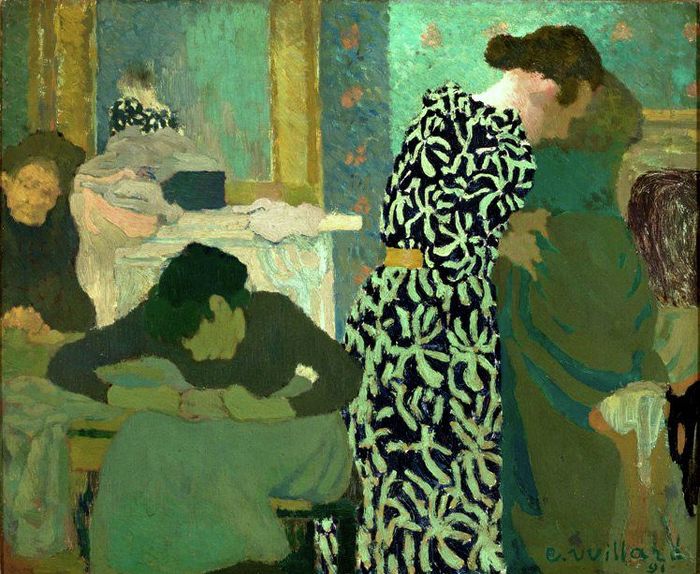Experienced through a screen – Warhol at the Tate Modern
Jonny Cresswell discusses the Tate Modern’s Andy Warhol exhibition and its presentation on the BBC’s ‘Museums in Quarantine’.
The Tate Modern’s Andy Warhol exhibition opened on the 12th March and closed just 5 days later. However, ‘Museums in Quarantine’ presented the show to the public via BBC 4. Whilst it may be the result of a crisis, this is a rare moment of accessibility in art - the exhibition would have cost a steep £22 to enter. The programme was an experiment in how we may begin to access art, a medium that conventionally demands physical engagement, in an extending lockdown.
Alistar Sooke, the show’s presenter, began with the warranted question - why does this white, male, pillar of the Western art historical canon deserve yet another, major retrospective? Warhol comfortably fits the ‘blockbuster’ exhibition brief - an established artist guaranteed to boost attendance and generate revenue.
As the BBC show pans to the ‘Pop’ room, you would be forgiven for considering this retrospective conventional. The paintings of Marilyn, Elvis, Coca-Cola, and Campbell Soup are hardly a surprise. Yet, it feels paradoxical to critique the exhibition for this. After all, the endless reproduction of images until they cancel out or gain new meaning is the basis of Warhol’s work.
As he walks through the rooms, Sooke moves beyond the Warhol who said ‘I want to be a machine’ and instead presents the erotic, desiring and fearful Warhol ‘as man’. Sooke mentions Before and After III, a deadpan illustration of a nose job, the displayed collection of Warhol’s wigs and, finally, 60 Last Suppers. In doing so, Sooke presents an artist obsessed by the transience of beauty and mortality, humanising the impenetrable Warhol persona.
The refusal to side-line these little known pieces highlights why it was necessary to stage another Warhol show.
Fortunately, Sooke engaged with the exhibition’s bold curatorial decisions. In ‘The Factory’ room, plastered with foil to recreate Warhol’s 1962 Factory, the camera caught the mirrored reflections of Sooke, helping to recreate the brash viewing experience. Sooke playfully engages with Silver Clouds, a installation of metallic, helium-filled balloons, a telling reminder that, at times, appreciating Warhol can be as simple as indulgence in sensory pleasure.
The Tate’s website informs us that Warhol was to be taken out of ‘the hype’, and instead explored through the lens of immigration and queerness. Sooke shows us the exhibition’s opening, a photo of Warhol’s mother, Julia Warhola, who arrived from Slovakia to New York in 1921. The programme goes on to insert clips from the exhibited piece Sleep, a five hour recording of Warhol’s lover, John Giorno, as he sleeps in the nude.
Moreover, a room was dedicated to the 1975 series, Ladies and Gentlemen, which depicted drag performers. The camera close-ups exposed the exuberant, audacious and viscous colours which melt features in a painterly recreation of gender fluidity. The refusal to side-line these little known pieces highlights why it was necessary to stage another Warhol show.
However, these narratives were muddied in the BBC’s broadcast. A 30-minute programme is constrained in what it can present, however, in an exhibition of 12 rooms, a quarter of the programme was dedicated to the conventional ‘Pop’ room. The Tate website reveals what was missed; the 1950s homoerotic line drawings of young men, the garish film installation Exploding Plastic Inevitable, the urine Oxidation piece and the overtly political Hammer and Sickle. In doing so, the BBC censored the show, denying the provocative works public view.
Sadly, ‘Museums in Quarantine’ felt like an Alistair Sooke programme instead of open access to a now inaccessible exhibition. The camera trailed Sooke, focusing on the individual works he discussed. The blissfully empty exhibition was a missed opportunity for panned-out shots, meaning the ability to consider curation, contrasts between pieces, or favourite works (beyond those Sooke discussed), were denied to the viewer.
Moreover, the narration was let down by Sooke’s forced attempts to convince us of Warhol’s relevance. The headline of death seen in 129 Die in a Jet!, was connected (somewhat tastelessly) to the current pandemic, whilst Warhol’s intimate film, Sleep, was tied to the voyeurism of Big Brother. Instead, moments of silence for reflection would have been beneficial.
Sooke further forced identity politics where inapplicable. Elvis I and II was described as receiving a ‘queer makeover’ from Warhol due to his velvet trousers, whilst 60 Last Suppers was connected to the Aids crisis due to its emphasis on men and death. Sooke’s implications of Warhol’s intentionality were disappointing. By labelling aesthetic choices as ‘queer’, Sooke others queer artists, akin to the historic labelling of work by female artists as ‘feminine’.
The approach of Sooke and the BBC exacerbated pre-existing issues of domineering gallery-wall text. Indeed, I am grateful to the BBC for presenting the exhibition, however, future programmes (which may increasingly become the norm) would benefit from greater openness to the viewer’s interpretation. Ultimately, I finished the programme with an impression of an exhibition brimming with possibility which was let down by an overbearing and sanitising BBC.
 News / Eight Cambridge researchers awarded €17m in ERC research grants27 December 2025
News / Eight Cambridge researchers awarded €17m in ERC research grants27 December 2025 News / News in Brief: carols, card games, and canine calamities28 December 2025
News / News in Brief: carols, card games, and canine calamities28 December 2025 News / Caius mourns its tree-mendous loss23 December 2025
News / Caius mourns its tree-mendous loss23 December 2025 Interviews / Meet Juan Michel, Cambridge’s multilingual musician29 December 2025
Interviews / Meet Juan Michel, Cambridge’s multilingual musician29 December 2025 Sport / Hard work, heartbreak and hope: international gymnast Maddie Marshall’s journey 29 December 2025
Sport / Hard work, heartbreak and hope: international gymnast Maddie Marshall’s journey 29 December 2025








